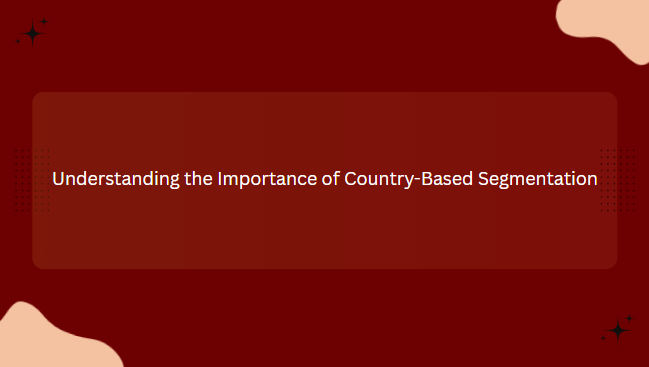Collecting Accurate Country Data from Subscribers
To effectively segment your list by country, you must first ensure you have accurate geographic data for every subscriber. There are several ways to collect this information. One method is to include a country field in your country wise email marketing list signup forms, allowing users to self-select their location. Another approach is to use IP-based geolocation tools that automatically detect a subscriber’s country when they join your list or interact with your website. Many email marketing platforms also allow integration with customer databases, CRMs, or e-commerce systems that already store country data. However, relying solely on automated tools without verification can lead to errors, especially if users are traveling, using VPNs, or entering incorrect information. Therefore, it’s best to combine automated detection with manual confirmation—perhaps by sending a brief survey or preference update request. The accuracy of your country data is the foundation of your segmentation efforts, as even minor mistakes can result in misplaced marketing messages. For instance, sending a “Happy Fourth of July” promotion to a subscriber in France could create confusion and erode trust in your brand.

Crafting Targeted Campaigns for Different Countries
Once your list is properly segmented, the next step is to create campaigns that resonate with each country’s unique audience. This often means more than just translating your content—it requires cultural adaptation. Language, humor, imagery, and even color symbolism can vary dramatically across regions. For example, the color red is associated with good luck in China but can signify danger in other parts of the world. Similarly, certain words or slogans may have different meanings—or even unintended negative connotations—when translated. Tailoring product recommendations to local trends is equally important. A tech company might promote high-speed internet plans in urbanized countries while highlighting satellite internet solutions in rural markets. Pricing strategies may also need adjustment to reflect local purchasing power and currency differences. Furthermore, respecting regional holidays and events can strengthen your relationship with subscribers. A holiday-themed sale timed for Diwali in India or Ramadan in the Middle East can show cultural awareness and increase engagement. This type of hyper-targeted approach transforms segmentation from a simple technical process into a powerful marketing strategy that speaks directly to the heart of each customer base.
Scheduling and Compliance Considerations by Country
When segmenting your list by country, timing and compliance are two critical factors that should never be overlooked. Email open rates can vary greatly depending on when a message is delivered, so scheduling according to each country’s local time zone is essential. A well-timed email ensures your content reaches subscribers during peak activity hours—typically early mornings or evenings in their region. This increases the likelihood of engagement and conversions. Compliance is equally important, as different countries have varying regulations governing email marketing. For example, the General Data Protection Regulation (GDPR) in the European Union imposes strict rules on consent, data storage, and opt-out processes. In the United States, the CAN-SPAM Act sets specific requirements for commercial emails, while Canada’s CASL law enforces even stricter standards. Ignoring these laws can result in severe fines and reputational damage. Therefore, marketers must not only segment by country for personalization but also to ensure they follow local legal requirements. Implementing a compliance checklist for each target region can help maintain brand integrity while avoiding costly mistakes.
Measuring Success and Optimizing Your Country Segmentation Strategy
The effectiveness of segmenting your list by country should be measured continuously to ensure maximum return on investment. Key performance indicators (KPIs) such as open rates, click-through rates, conversion rates, and unsubscribe rates can reveal which countries respond best to your campaigns and which require improvement. Advanced analytics tools can break down engagement metrics by region, allowing you to spot trends and make data-driven adjustments. For example, if open rates are high in Germany but conversions are low, it might indicate a need for more compelling offers or localized landing pages. Conversely, if a campaign underperforms in a specific country, you may need to re-examine your messaging, timing, or product-market fit. A/B testing can be particularly valuable in refining country-specific strategies. By testing subject lines, call-to-actions, or promotional offers in different regions, you can identify the most effective combinations for each audience. Over time, this ongoing optimization will turn your country segmentation strategy into a finely tuned marketing engine, delivering personalized, relevant, and high-performing campaigns across all your target markets.